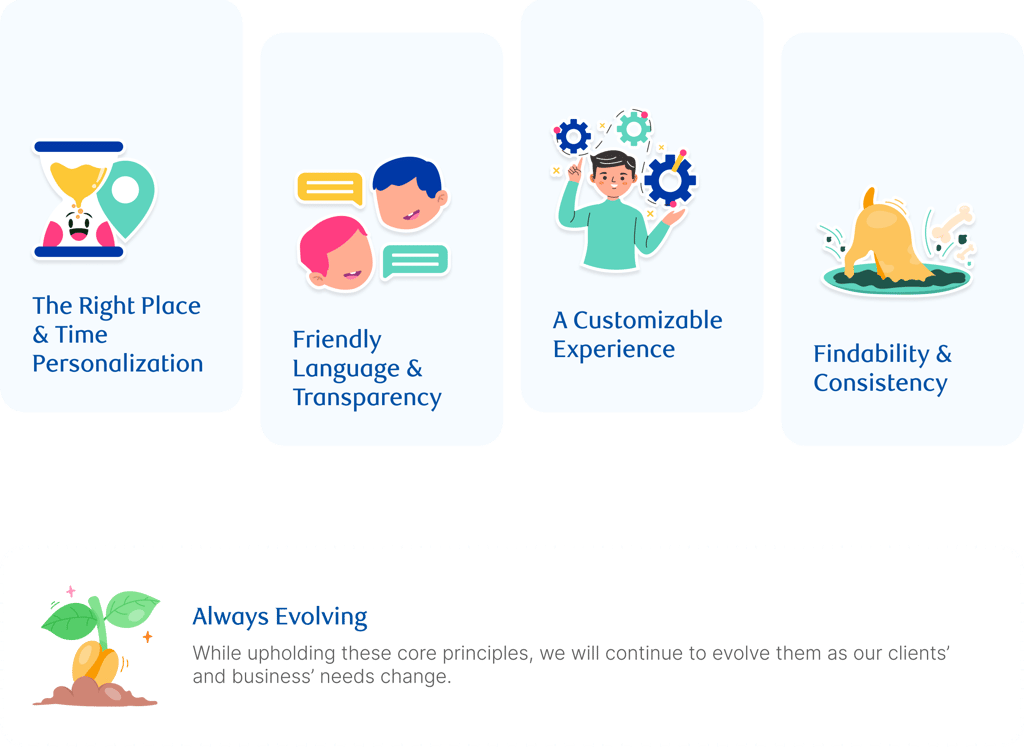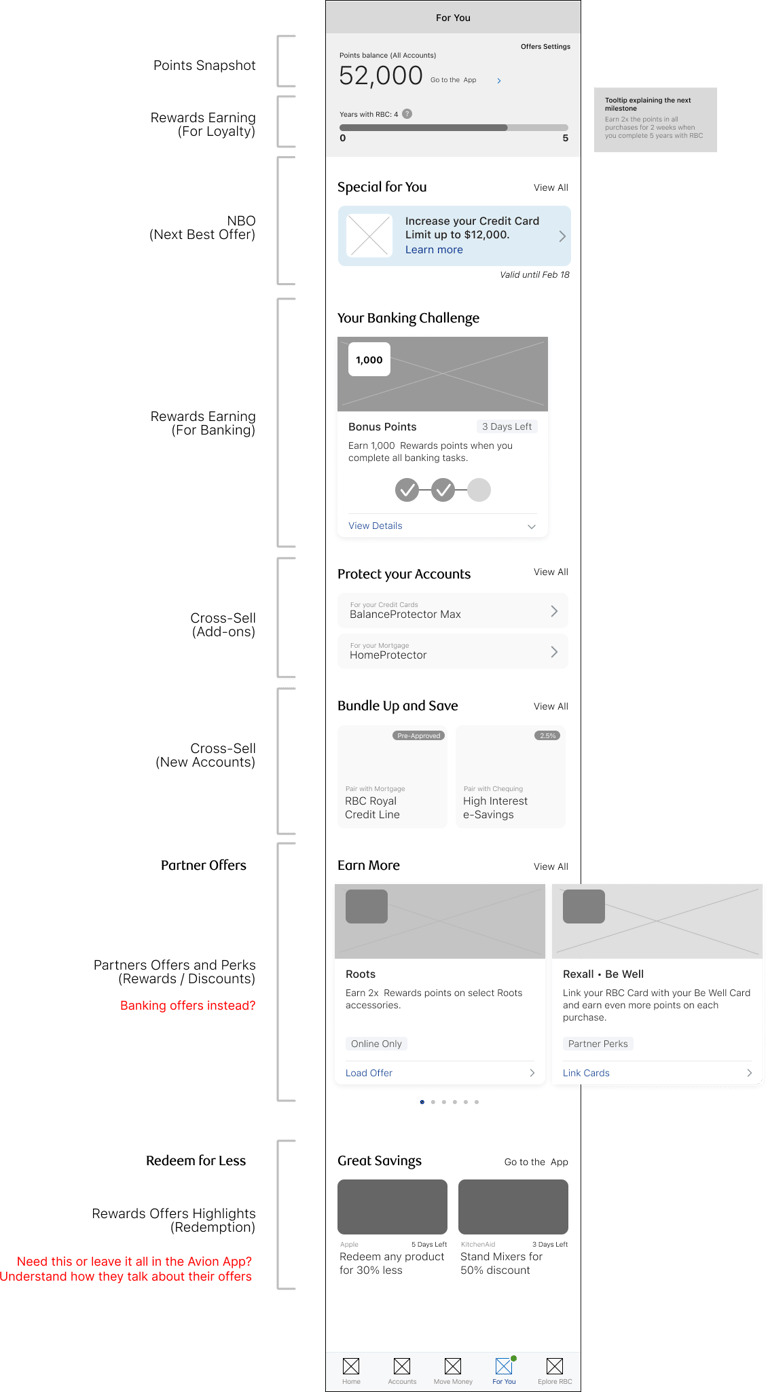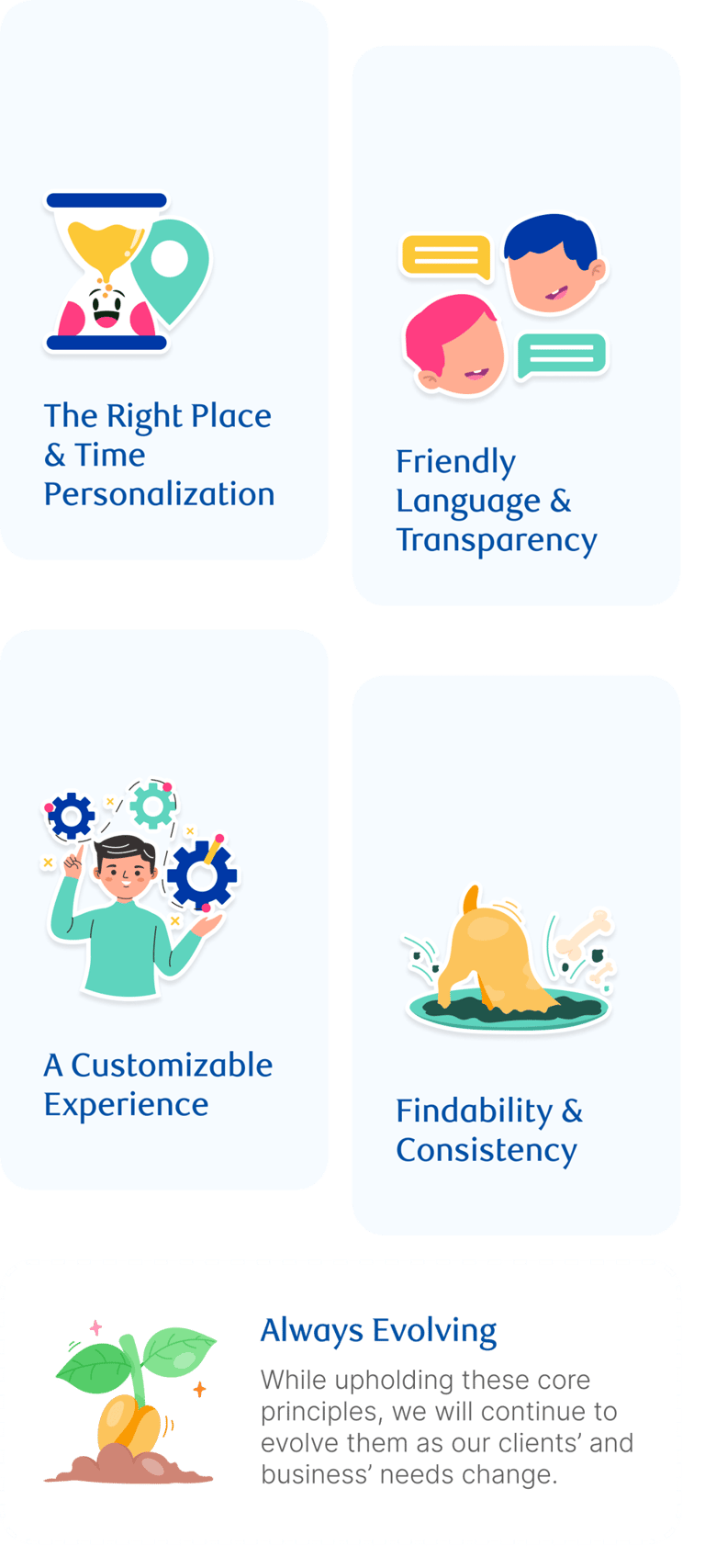For You
How I influenced the Mobile Sales Product team to explore financial offers through our clients' lenses by leveraging extensive research and data.
aka "Offers hub"
As the Lead Interaction Designer, I partnered with other Product and Content Designers, Engineers, Researchers, and my Senior Manager to contribute to a long-term vision and strategy for offers in the mobile app, using a visual framework to communicate it across RBC.
Even though we haven’t seen the results that we imagined in the beginning, it was the first design-led project to be funded by the Business, and to be incorporated into the Product’s roadmap.
_______________


RBC • Mobile Banking
RBC had many financial offers advertised to its clients. However, once the offers were communicated, clients had a hard time finding them to fulfil within the digital channels, and ended up calling or going to the branch to seek assistance.
Therefore, the number of offers fulfilled through mobile was low and generated unnecessary calls.
Business
Case
Increase sales by understanding how clients perceive and interact with financial offers in the RBC mobile app.
Project
Objective
There was no centralized place in the Mobile App where clients could easily find the financial offers available to them.
Instead, Offers were scattered in multiple locations, using multiple and inconsistent tactics and patterns, making it hard for clients to find and identify them again at a later visit.
Main
Challenges
01 No 1-stop shop for offers
02 Inconsistent language and communication across RBC
The term “offers” was used in various contexts across multiple platforms and touchpoints with different meanings.
Depending on where the client was, “offers” meant points and rewards, perks and discounts, financial products sales, promotions, etc.
03 Expectations mismatch
For clients, however, the term “offers” within the banking context, resonated more with special conditions offered to them given their financial situation and relationship with RBC.
Ie: special mortgage rates, waived fees, etc.
Research showed that the current offers advertised to clients were not appealing enough as they used a sales/marketing jargon and the language didn’t imply personalization.
I partnered with a peer Product Designer and conducted an extensive internal study to understand the different types of offers, grouping them by category, according to a card sorting activity ran with 20+ clients:
Financial offers: RBC products with special conditions (ie: special mortgage rate)
Marketing offers: RBC campaigns to attract new clients (ie: cash incentive, iPad)
Rewards: earn more points or redeem for fewer points
Perks and Partner Offers: advantages clients can access with RBC partners
I then leveraged the results, along with other research insights, to inform how using the term "offer" inconsistently could potentially affect how clients perceive and interact with those offers, and how a strategic restructuring could increase fulfilment.
Multiple rounds of research and internal workshops in partnership with our UX Researcher and another squad of designers, resulting in the following main insights:
Clients want personalized offers that reward them for their relationship with RBC and their financial health. Ie: better rates
The term "offers" is usually associated with points and rewards
Not all banking offers are perceived as a benefit for the client; most sound like sales/marketing campaigns that are advertised to all clients
Approach
01 Audit and classify all types of offers
02 Further research
03 Offers Guiding Principles
Based on the interviews and research insights, we created the following guiding principles on how to approach financial offers -- initially in the app, aiming to scale to organization-wide:
04 Personalization framework
Because we were proposing structural changes in how offers should be communicated and presented, things would take time. I soon realized how difficult it was to visualize the steps we needed to achieve the result envisioned by our team.
I then created a visual representation of the framework that the team ultimately adopted to align our vision and help us communicate our long-term strategy, aligning it with the product’s roadmap and business strategy.




Offers Hub
Designs




Initial concept
MVP
Other challenges
Feature naming due to different types of offers and regulations in some provinces
For the initial releases, it didn’t earn the visibility we were expecting due to multiple factors, such as
The need for bigger conversations with other teams for alignment on offers would take long
Other projects running in parallel by other teams that would require better orchestration
Not enough financial offers to display to users due to the lack of personalization strategies and technology to manage personalization at a client level
Slight increase in the mobile fulfilment
There was a slight increase in the fulfillment numbers made through the Mobile app, which was associated with the creation of a new financial offers hub.
We couldn’t measure the impact on the number of calls related to offers.
Results
Bigger conversations across RBC
This topic became a significant conversation involving multiple teams and stakeholders, and gained visibility due to its potential for greater impact on sales.
Ultimately, our team uncovered multiple missed opportunities that could be explored as part of the Sales strategy in the mobile app thanks to the Design process and research.
However, the Sales and Business partners also needed to shift their strategy to align their efforts with our clients' mindsets, as per research.
Personalization may be closer than we originally expected
With the app redesign and the advance of AI, the new “Offers hub” gained visibility iwith upper management, being incorporated as part of the main navigation, where personalized offers would be presented along with the users’ financial insights, and receiving more funding for further exploration.
This was a very complex project due to multiple intricacies with various teams, while being key in advancing Sales opportunities.
The MVP hasn't brought major gains, and we already expected that. On the other hand, it gained traction within the organization, although there's still much to uncover and align.
It is now an ongoing project, even after my participation ended.
These were the main results while I was still at RBC:


